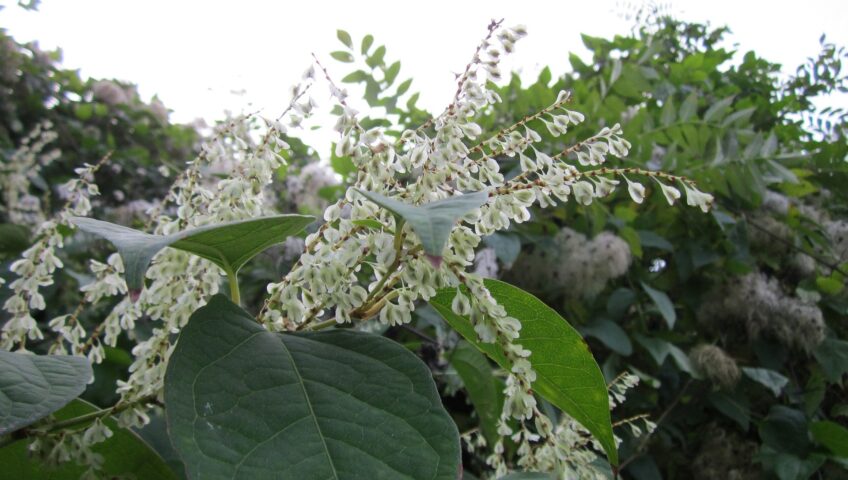
How to Get Rid of Japanese Knotweed
Japanese knotweed was originally brought to Britain as an ornamental garden plant but has since been classified as an invasive non-native species. It is now seen as one of the most difficult weeds to deal with. The plant is tightly regulated with legislation in place to keep it controlled. It can cause a huge problem for homeowners and gardeners, but with our guide you can properly remove it from your garden.
How to identify Japanese Knotweed
Japanese knotweed is a perennial weed, meaning it will lie dormant over the winter but regrow every summer. It grows in bamboo-like canes, with purple spots. Light green, heart-shaped leaves about 14cm long grow from the stems. These are then followed by creamy-white flowers in late summer or early autumn.
It’s important to identify your plant correctly. Japanese knotweed can be similar in appearance to other plants, such as Russian vine and Himalayan honeysuckle. Some of these other plants can be difficult to deal with but aren’t as invasive and won’t need as robust methods for removal.
What’s the problem with Japanese Knotweed?
Japanese knotweed can sprout from very small sections, growing rapidly and spreading relentlessly. The roots can grow to 1m deep making it very difficult to excavate.
The plant can grow through cracks in brickwork and pipes and can even damage roads. It’s important to control Japanese knotweed as soon as possible as it can even damage the foundations of your home. Homeowners are legally obliged to disclose if Japanese knotweed is present on the property when selling their home. It can seriously affect the value and can impact whether a buyer is able to get a mortgage. So, it’s important to get it properly removed if you are planning on selling you home.
Whilst it’s not illegal to have Japanese knotweed in your garden, it is an offence to allow it to grow in the wild – whether through fly-tipping or letting the plant escape the limits of your property. The plant can cause problems in your garden as it will out-compete all nearby plants. It’s especially important to not let it grow in the wild as it can harm the natural ecosystem. If you notice that Japanese knotweed has been dumped illegally in the wild, you should contact The Environment Agency.
How to remove Japanese knotweed from your garden
If you have a small, manageable clump of knotweed, it may be possible to control the plant yourself. It usually takes around three to four seasons to properly remove Japanese Knotweed without professional help. If you have a large batch of Japanese knotweed, you may prefer to use a professional contractor. They may be able to eliminate the weed in one to two seasons.
If you want to manage the weed yourself, you’ll start by cutting down the canes. The weed will not be able to regrow from cut canes, so cut as many as you can, as close to the ground as possible. Remove the cut pieces but note that you can’t put these in compost or any household or garden waste bins. Japanese knotweed is classed as ‘controlled waste’, so you will either have to burn it or take it to a licensed landfill. A garden waste professional will be able to assist with this.
The most effective way to then eradicate Japanese knotweed is to use a glyphosate-based weedkiller as soon as you’ve cut the canes. Make sure to only apply this to the weeds, as the chemicals will damage any vegetation it touches. Then wait seven days before attempting to pull the weeds – this allows time for the weedkiller to penetrate to the roots. After seven days, you can remove as much of the plant that’s left as possible, taking care to dig out the roots with a pitchfork if they aren’t too deep. Again, remember to dispose of the plant properly and not in your household bins.
Cutting and treating the weed just once will not kill it completely. You should then mow over the plants every week to attempt to weaken the Japanese knotweed. You’’ll then need to continue to apply the glyphosate-based weedkiller twice a year, in late spring and early autumn. The regrowth of the knotweed will look quite different to the normal plant, but it is essential that this is continuously treated.
Make sure to follow the instructions of your weedkiller carefully to minimise risks to yourself, pets and wildlife.


